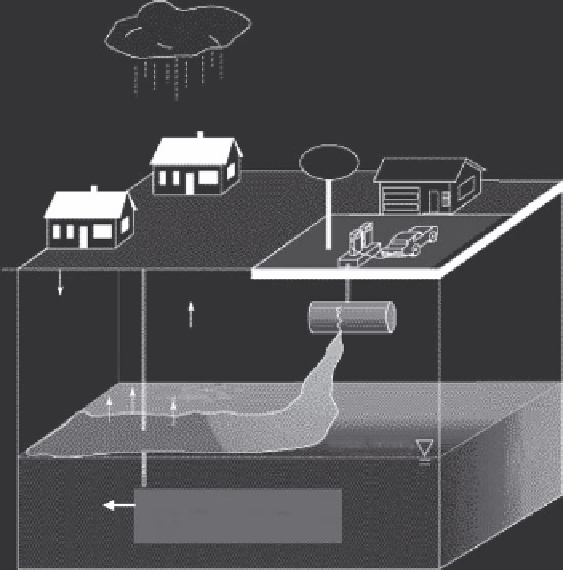Environmental Engineering Reference
In-Depth Information
Precipitation
Gasoline
n
Well
Land
surface
Diffusion
Recharge
Unsaturate
d
zo
ne
Biodegradation
Volatilization
Water lable
Groundwater flow direction:
advective transport
FIGURE 8.8
Advective transport and other processes effecting the migration of contaminants in groundwater. (From United
States Geological Survey (USGS), Simulating transport of volatile organic compounds in the unsaturated zone
using the computer model R-UNSAT, USGS Fact Sheet 019-98, Washington, DC, 1998.)
Source plane
Bounding envelope
Higher permeability zones
carry more contaminant mass
Center of mass
FIGURE 8.9
Contaminant migration in heterogeneous and anisotropic geologic media. (Adapted from Payne, F.C. et al.,
Remediation Hydraulics
, CRC Press, Boca Raton, FL, 2008. With permission.)
This concept is represented in Figure 8.9, where a contaminant (solute) is shown migrat-
ing in the more permeable layers. More highly permeable layers have a higher hydraulic
conductivity and behave as preferred groundwater and contaminant migration pathways.
These layers are essentially super highways for groundwater and contaminant transport,
and in some instances the hydraulic conductivity is from 100 to sometimes 1000 times
greater over distances of just a few centimeters.


Search WWH ::

Custom Search